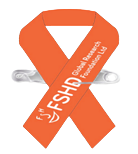GRANT 48
Research Institution: Hubrecht Institute
Principle Investigator: Professor Niels Geijsen
Type: International – Utrecht, Netherlands
Project title: “Muscle-in-a-dish, development of an in vitro platform of human skeletal muscle”
Status: Active
Summary
FSHD is a human-specific disease and current in vitro and in vivo models do not fully recapitulate the genetic and pathophysiologic aspects of the disease. Therefore, the rationale of this project is to create a 3-D in-vitro FSHD muscle model that mimics the human pathophysiology of FSHD as close as possible. The ability to grow skeletal muscle in a 3D environment coupled with electrostimulation of the muscle tissue allows improved maturation of the in vitro-derived skeletal muscle tissue and provides a new platform on which to test functional parameters of human muscle physiology and test new therapeutic approaches to treat FSHD. In this project, we aim to generate human 3D muscle tissue in vitro to model the natural physiological state and pathogenesis of FSHD, and enable the assessment of the efficacy of different gene editing approaches for the treatment of this disease.
PROGRESS REPORTS
Update September 2019
Grant 48 – Muscle-in-a-dish, development of an in vitro platform of human skeletal muscle
Facioscapulohumeral dystrophy (FSHD) is the most common autosomal dominant form of muscular
dystrophy, affecting approximately 1 in 8000 individuals worldwide. It is caused by the decreased
repression of the D4Z4 repeat on chromosome 4, which results in the expression of Dux4, a
transcription factor encoded by the most distal repeat in the D4Z4 array. The aberrant Dux4
expression causes degeneration of skeletal muscle tissue. Since rodents do not possess the Dux4
gene or a related homologue, FSHD is a human-specific disease and current in vitro and in vivo
models do not fully recapitulate the genetic and pathophysiologic aspects of the disease. Therefore,
the rationale of this project is to create an in vitro model that mimics the human pathophysiology of
FSHD as close as possible.
Progress aim 1: Protocol development for the in vitro generation and isolation of Pax7-positive muscle progenitor cells
We have adapted a protocol initially developed in the lab of Dr. Pyle at UCLA that allows the in vitro
differentiation of pluripotent stem cell into muscle progenitors, which can be purified based on two cell surface markers; ERBB3 and NGFR and the absence of the neural crest marker HNK1. This
protocol is now working in our lab and preliminary results demonstrate that the ERBB3+/NGFR+/
HNK- population indeed enriches for Pax7-positive cells compared to populations that express just
one or none of these markers.
Progress aim 2: Development of a 3D bio-fabricated honeycomb muscle matrix scaffold
A new material to melt-electrowrite scaffolds, has been developed. This material contains grapheneoxide (GO) which makes the new constructs both magnetic and conductive. These properties will allow for mechanical as well as electrical stimulation of the 3D cultures. Currently, mechanical testing is being done on these constructs in order to determine the mechanical properties of the PCL-GO scaffolds.
Three shapes of scaffolds; squared, honeycomb and reentrant-shaped made out of polycaprolactone
(PCL) have been used to study C2C12 cell alignment. Samples have been cultured for up to 14 days.
Clear tissue formation was visible (figure 1). However, the samples (figure 2) did not show visible cell
alignment or differentiation upon examination with confocal imaging. Cell confluency is very
important for C2C12 cells in order to be able to differentiate properly. With a cell density of 1.5
million per sample and based on the images in figure 1 we can conclude that the cell density is high
enough for the cells to be able to differentiate into tubes. Unfortunately, little to no differentiation
has been seen.
A possible explanation for this unlikely event, might be the choice of supportive hydrogel. In a
previous pilot study we were able to show alignment and differentiation. In this pilot
study, by mistake, Matrigel specific for embryonic stem cells was used. In the current study, Matrigel
for conventional cultures was used. This could explain the lack of differentiation and therefore
alignment. Therefore, this set of experiments have to be repeated with multiple Matrigel-types.
Traditionally, C2C12 cells are being differentiated on ECM-coated plates. The ECM has been left out
in this set-up but. We will fabricate a hydrogel out of this ECM and test if alignment and
differentiation will improve . Also, recently (June) a paper has been published on “Culturing C2C12
myotubes on micromolded gelatin hydrogels accelerates myotube maturation” so instead of
Matrigel or ECM we investigate gelatin as a potential alternative matrix. Additionally, other cell
types will be investigated.




